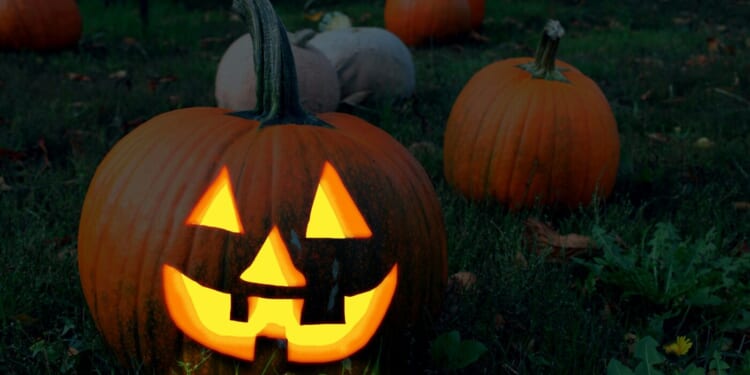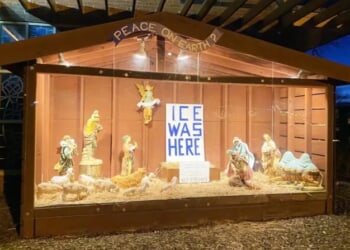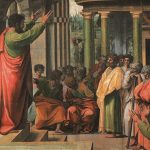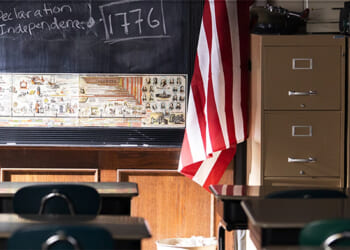Halloween is here again, and with it come the costumes, the candy, and the inevitable parade of skeletons, witches, and ghouls across lawns and social media feeds. For many Catholics, the question is familiar: “Is it okay for my family to participate?” That question has been answered: yes it’s okay. Yet beneath the usual cultural anxiety lies a deeper and often overlooked question: Why are we so fascinated by the supernatural, and how should our faith shape that curiosity?
The Church has always been clear that faithful engagement with the spiritual realm matters. Scripture reminds us that there is a real world beyond the visible. Angels minister to the faithful (Heb. 1:14), souls await the resurrection (2 Macc. 12:44–45), and demons exist to tempt, deceive, and challenge our fidelity (Mk. 5:1–20). This is not superstition or horror-story fodder; it is reality.
The modern Halloween, however, often divorces this reality from moral and spiritual context. Movies, podcasts, and viral videos sensationalize ghosts, haunted houses, and occult practices, reducing the supernatural to thrills, jokes, or social currency. Catholics can participate in the festivities—but only with eyes wide open to the truth: the supernatural exists, but it exists in relation to God, not independently or arbitrarily.
Ghosts, Spirits, and the Church
A persistent question parents face is about ghost stories: Are they harmless entertainment, or a brush with the occult? The Catechism of the Catholic Church is instructive here: “All forms of divination are to be rejected: recourse to Satan or demons, conjuring the dead, astrology, and other practices falsely supposed to unveil the future” (CCC 2116).
Telling ghost stories may seem innocuous, but the line between imagination and occult curiosity is thin. Stories that romanticize or glorify spirits, necromancy, or demonic activity risk feeding fascination with powers the Church calls dangerous. In contrast, telling stories about the lives of the saints or the faithful departed (especially those in purgatory, for whom we can pray) grounds the supernatural in grace, hope, and God’s providence.
This is one reason why All Saints’ Day and All Souls’ Day are profound: they redirect the imagination from fear to faith. Halloween can be approached similarly. Trick-or-treating becomes less about summoning a thrill from darkness and more about encountering the mystery of life and death with discernment and joy. Dressing as saints, angels, or biblical heroes is a small but powerful catechesis in disguise.
Pope Leo XIV’s recent blessing of a block of glacier ice sparked widespread mockery online. Why? Because symbolic acts rooted in the sacred often look absurd when taken out of theological context. The same principle applies to Halloween: the secular world revels in fear, shock, and the macabre, while the Church invites reverence, prayer, and understanding.
Catholics can reclaim this space without becoming humorless or dour. In fact, humor is a natural tool for catechesis. Consider teaching children about saints or angels through costumes or dramatized stories. Laughter, wonder, and imagination become vehicles for understanding the sacred, rather than ends in themselves.
The Supernatural, Not the Sensational
Catholic teaching distinguishes between the real supernatural and the sensationalized version popular in media. Angels, demons, souls, and miracles are real; ghosts on TikTok are usually not. The distinction is crucial:
- The real supernatural points to God. Angels obey God’s commands, demons oppose His will, and souls rely on His mercy. Every supernatural encounter we are permitted to contemplate should orient us toward God.
- The sensational is self-centered or fear-driven. Media-driven ghost stories, haunted houses, and horror films focus on fear, shock, and entertainment rather than truth. Engaging with them without discernment can desensitize the faithful to spiritual reality.
For children especially, Halloween can be a catechetical opportunity. Saints’ costumes, Scripture-based dramatizations, and age-appropriate explanations of heaven, hell, and purgatory teach truth in ways that are memorable, fun, and safe. Parents are not merely “policing” a holiday—they are shaping the imagination of future disciples.
The simple act of trick-or-treating offers subtle lessons in charity, gratitude, and neighborliness. Receiving candy becomes a small exercise in humility and gratitude; giving treats models generosity. Even seemingly mundane rituals can form moral habits when approached with intentionality.
Some parishes take this further with “Saints’ Nights,” “Halloween for the Saints,” or “Blessing of the Animals” in late October. These events reframe the celebration: supernatural fascination is redirected toward the eternal truths of life, death, and resurrection. They combine fun with catechesis, delight with reverence—a combination the secular Halloween machine rarely considers.
Engaging the Culture Charitably
For adults, a Catholic approach to Halloween and the supernatural is also a form of evangelization through witness. Participating wisely in festivities allows families to witness:
- That fear need not dominate our lives; God’s providence is greater than any darkness.
- That imagination can be sacred, pointing toward God and the eternal, not simply toward thrills.
- That death and the supernatural are not taboos, but realities met with hope, prayer, and reverence.
It is a gentle witness, often unnoticed but powerful. In a culture obsessed with ghouls, ghosts, and gore, the Catholic response is a quiet countercultural claim: God is real, angels and saints are real, and death is not the end.
Conclusion
Halloween need not be a battleground. When Catholics approach the holiday with discernment, imagination, and prayer, they reclaim a cultural moment for God. Trick-or-treating, costumes, and even ghost stories become tools for teaching, entertaining, and witnessing—all within the light of truth.
The world laughs at the sacred because it does not understand it. Catholics are called to live in that space with joy and courage, demonstrating that what is true is also good and beautiful. By approaching the supernatural responsibly, we show that faith is not a restriction of life, but an invitation to see reality—the visible and invisible—with wonder, hope, and gratitude.
In other words, while the world dresses up in ghouls, the Church teaches us to see saints, angels, and God’s providence everywhere—even in the dark corners of Halloween night. And perhaps, in doing so, we remind others that the truly supernatural is not frightening—it is the very life of God at work in the world.
Editor’s Note: Rather than engaging with the cheap thrills and chills of Halloween media today, prepare for the Feast of All Saints by witnessing the cinematic recreation of the brutal death of St. Maximilian Kolbe in Triumph of the Heart. (Now available on streaming! Use coupon code: CATHOLICEXCHANGE) May his witness and patronage assist us in orienting our supernatural contemplations rightly toward the Divine.











